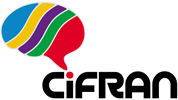An introduction to the major principles of the NLA took place on Saturday, October 27th , 2018 at the prestigious Kyoto University of Foreign Studies, in Japan. Many thanks to Romain Jourdan-Ôtsuka, who never spares either time nor effort in promoting the NLA. Without him, nothing could have been organised.
This event allowed teachers of French, English, and German to gather, bolstering our hopes that the neurolinguistic approach is proving able to catch the attention of language teachers from around the world, and of supporting them, no matter what language they teach. Indeed, among the topics raised during discussions after the presentation was the possibility of using the NLA’s strategies to teach Japanese as a foreign language, an idea currently being experimented with in France.
Other discussions touched on the NLA’s criterion of the intensity of the teaching and on the teaching materials to be used. One essential takeaway remains that, for fundamental neuroeducational reasons (the ‘consolidation’ principle), the intensity of teaching rhythms is obviously a powerful factor in acquiring a second or foreign language, especially with a teaching method that aims to emphasise implicit linguistic acquisition through teaching strategies specially designed to do so.
But even if teachers are subjected to a non-intensive teaching situation, surely no-one would argue that they should therefore refuse to take into account the discoveries made by cognitive neuroscience that invite them to reconsider their teaching practices and present them with opportunities to optimise their efficiency.
Thus, even if the NLA first demonstrated its efficacy with Canada’s Intensive French programme, the methodology it has unveiled invites us to consider the possibility of a wide variety of contexts of teaching situations throughout the world.
Reflecting on how the NLA can be developed in diverse contexts also led us to look at the necessity of considering various types of teaching materials to accompany NLA classes that would take into account the varying rhythms and pedagogical goals of given classes. In this light, Romain Jourdan-Ôtsuka has been working since May 2017 with Claude Germain and Gladys Benudiz to complete teaching units specifically designed for French-as-a-foreign-language students following less intense classes and who wish to sit the DELF examinations. These teaching units will be available to teachers who have completed an initial NLA training session.
Language teachers wishing to turn theory to practice are invited to attend a certifying initial training (NLA1) workshop held in the Kansai region (Kyoto, Osaka, Nagoya) from 18-22 March 2019 and in the Kanto region (Tokyo, Yokohama, Chiba) from 25-29 March.
Olivier Massé





